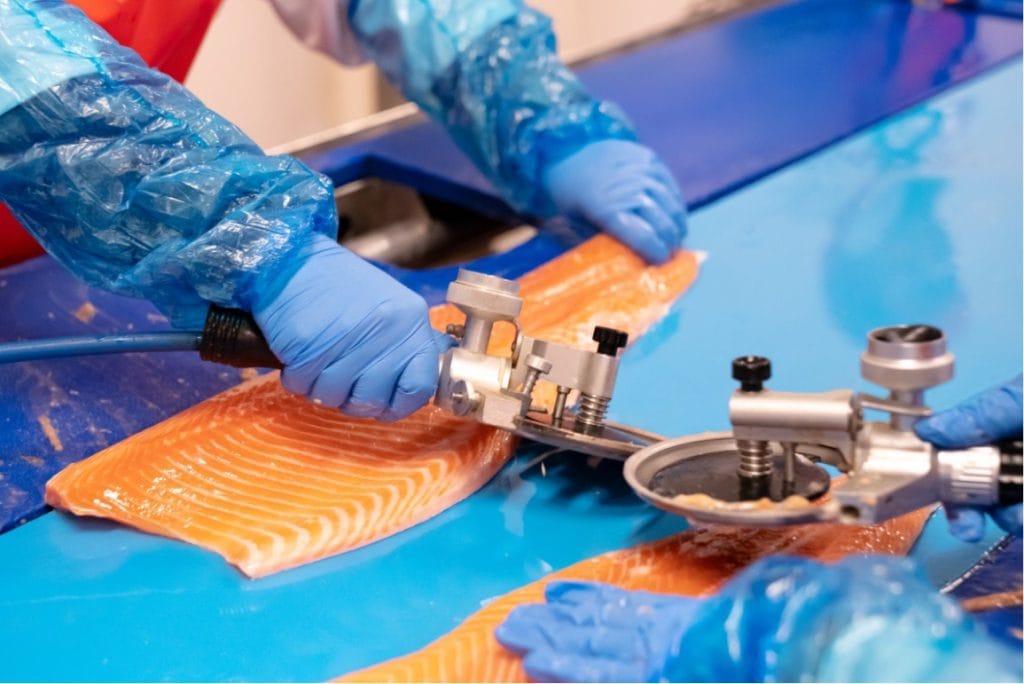
Scottish or Norwegian Salmon – What’s the difference?
Scottish salmon or Norwegian salmon. What is the difference and how do you know if you are buying the right one? We explain the differences.
What is Scottish Salmon?
Scottish salmon is the same as Atlantic salmon. These can best be recognized by the indication of the Latin name ‘Salmo salar’. This species is called Scottish salmon because it is caught or farmed near Scotland.
So there are two types of Scottish salmon:
- Wild Scottish river salmon caught in Scottish waters;
- Farmed Scottish salmon from aquaculture.
Characteristics of Scottish Salmon:
Farmed Scottish salmon tastes different from wild Scottish salmon. It has to do with the type of food. In addition, the taste of Scottish salmon is also different from that of Norwegian salmon. This has to do with the differences in water temperature, type of water and nutrition. In general, Scottish farmed salmon have somewhat larger bellies and more fat. They are a bit fatter than Norwegian farmed salmon. Due to the fat percentage, they have a shorter shelf life, about two weeks.
Is Scottish salmon farmed?
Because demand exceeds supply, most Scottish salmon are farmed. In addition, the wild salmon is more expensive and therefore there is less demand for it.
More information about the choice between wild and farmed salmon can be found in this blog. + link to blog
Figures on Scottish salmon
- In 2018, the production of Scottish salmon was approximately 150,000 tonnes. That is slightly lower than in the record year 2017;
- Scottish salmon is produced by about 12 farms that together have about 226 farms. These are mainly on the west coast, but also on Orkney and the Shetland Islands;
- In 2017, the salmon farms employed approximately 1,431 people, providing 10,000 jobs in rural areas of Scotland;
- Most of the salmon comes from salmon from farms located in fjords;
- Salmon is an important industry within Scotland with an export value of over £1 billion in 2019.
- Some of the salmon farms in Scotland are owned by Norwegian companies.
What is Norwegian Salmon?
Norwegian salmon is also an Atlantic salmon with the Latin name ‘Salmo. It is called Norwegian salmon because it is farmed or wild caught near Norway. Due to the lower fat percentage and the quality, it has a slightly longer shelf life, about 17 days. Norwegian salmon is also slightly more orange in color.
Norwegian salmon figures
- Norway is the largest salmon producer in the world. With a production of 1 million tons per year;
- Norway has stricter regulations than Scotland. If it can be shown that the farm is causing damage to nature, or that it negatively affects wild salmon, the farm risks a fine;
- Norway is an important place for salmon farming. That has to do with:
- Logistics: The short distance from the fjords of Norway to the European consumer is very favorable;
- Fresh: The fish is filleted near the farms. After that, the fish has a certain corpse stiffness. The few days it takes is exactly the distance between Norway and the Netherlands. So when the fish arrives at our fish processing company in Urk, the salmon is just right for optimal processing;
- Export through Europe. The processing takes place in Urk. After that, it is ready for retail, catering, school canteens in Italy, etc. When it arrives on site, the salmon is still super fresh.
Order Scottish or Norwegian salmon?
Are you private? Then after this blog you know what to look out for to buy the right type of salmon.
Or check out all our salmon options here.
Do you own a restaurant? Please contact our sales department. We are happy to help you.



